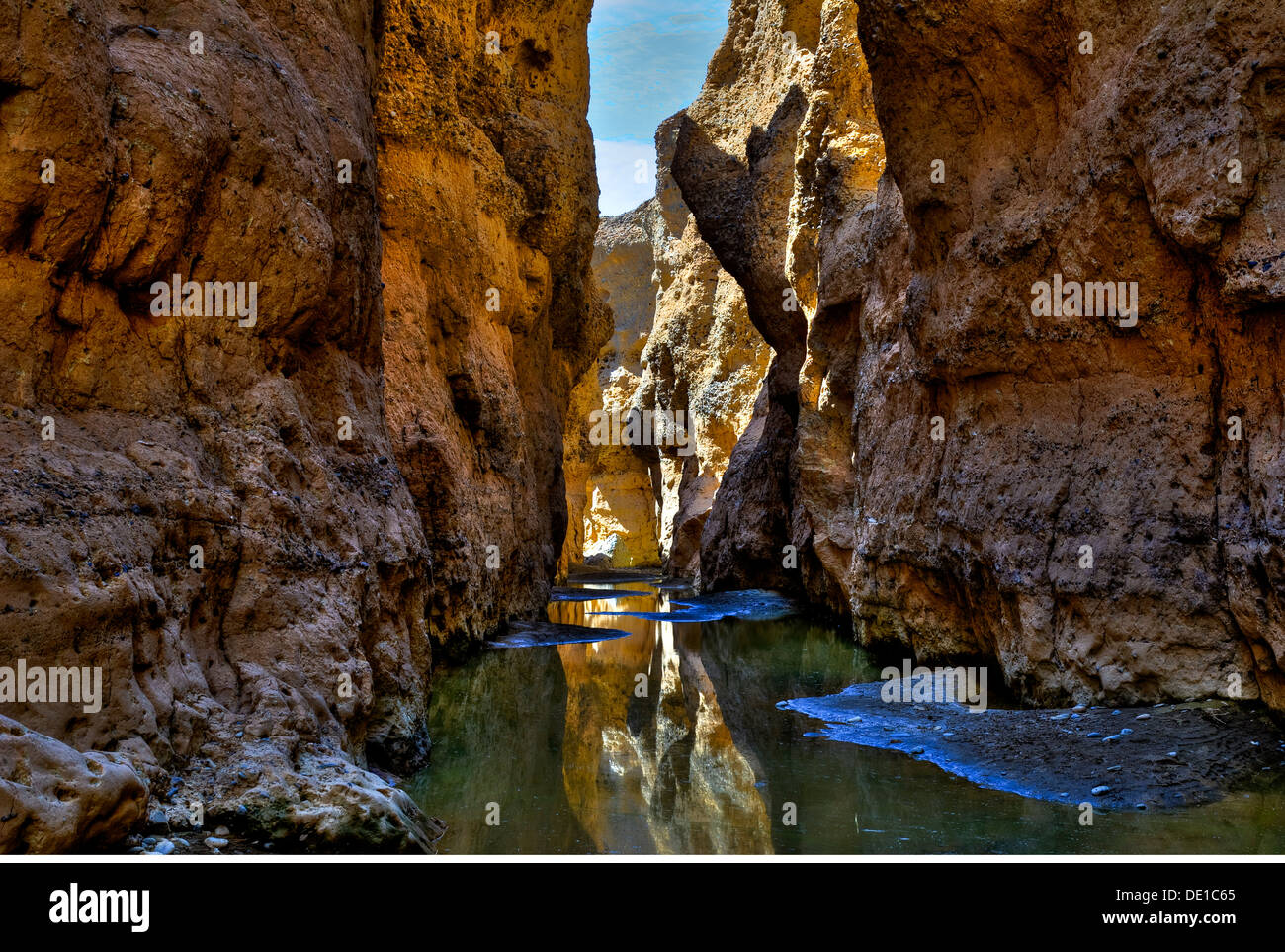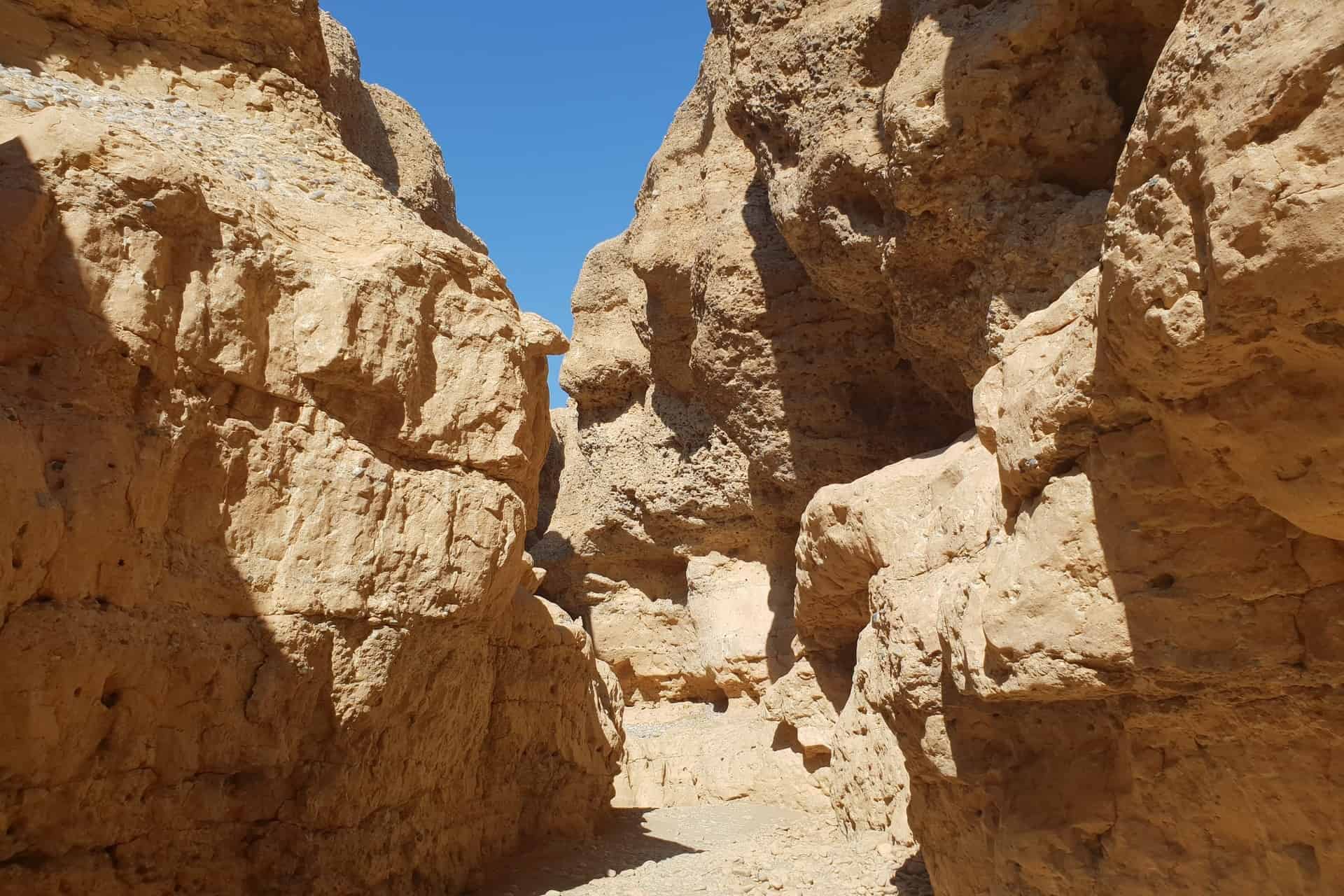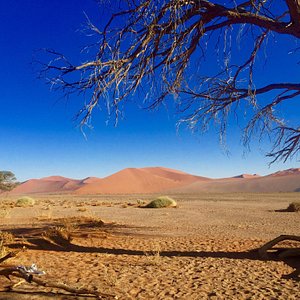Sesriem Canyon: Namibia's Dramatic Natural Wonder

Introduction to Sesriem Canyon Namibia
Brief overview of Sesriem Canyon
Sesriem Canyon is a natural canyon located in the Namib Desert in Namibia. It is a popular tourist destination known for its unique rock formations and stunning landscapes. This canyon offers visitors a chance to explore the beauty of nature through hiking and sightseeing. The narrow canyon walls rise up to 30 meters in some places, providing a sense of awe and wonder to all who visit.
History and Formation of Sesriem Canyon
Sesriem Canyon was formed millions of years ago through the action of the Tsauchab River, which carved out the canyon walls over time. The name "Sesriem" actually means "six belts" in Afrikaans, referring to the fact that early settlers had to use six belts tied together to lower buckets into the canyon to retrieve water. This history adds a unique cultural element to the geological wonder of the canyon. Over the years, the canyon has become a hotspot for tourists seeking to witness the power of nature and the passage of time in the rock formations.
The canyon is a testament to the forces of nature and the desert's ever-changing landscape. Whether you are an avid hiker, a nature enthusiast, or simply a curious traveler, Sesriem Canyon offers a glimpse into Namibia's geological history and the beauty of the natural world.

Location and Accessibility of Sesriem Canyon
Geographical location of Sesriem Canyon
Sesriem Canyon is situated in the Namib Desert in Namibia, showcasing its natural beauty and geological wonders. The canyon's unique rock formations and stunning landscapes attract tourists worldwide.
How to reach Sesriem Canyon and entrance fees
To reach Sesriem Canyon, visitors can travel by road from major cities such as Windhoek, the capital of Namibia. The canyon is accessible by car, and guided tours are also available for those seeking a more informative experience. Entrance fees to the canyon are nominal, allowing visitors to enjoy the natural wonder without breaking the bank.

Geological Significance of Sesriem Canyon
Formation process of the canyon
Sesriem Canyon was formed over millions of years through the erosion caused by the Tsauchab River. The powerful force of water carved through the sedimentary rock, creating the deep and narrow ravine that we see today. The continuous erosion of the canyon walls by flash floods has contributed to its unique shape and character.
Unique rock formations and geological features
The rock formations within Sesriem Canyon offer a glimpse into the region's geological history. The canyon walls exhibit layers of ancient rock that tell a story of prehistoric landscapes and environmental changes over time. Visitors can marvel at the stunning colours and textures of the rock, which add to the beauty and allure of the canyon.

Flora and Fauna of Sesriem Canyon
Plant and animal species in the canyon
When exploring Sesriem Canyon, you will encounter a variety of plant and animal species that have adapted to survive in this rugged environment. Hardy desert plants such as camel thorn trees and bastard cobas dot the landscape, providing shade and shelter for creatures like dassies and geckos. Bird enthusiasts can spot owls, eagles, and vultures soaring above the canyon walls while lizards bask in the sun on the rocky outcrops.
Ecosystem diversity and conservation efforts
The ecosystem of Sesriem Canyon supports a delicate balance of flora and fauna, making it essential to protect this unique environment. Conservation efforts focus on preserving the natural habitats of the plant and animal species that call the canyon home.
By raising awareness about the importance of biodiversity and implementing sustainable practices, we can ensure that future generations will continue to enjoy the beauty and rich biodiversity of Sesriem Canyon.
Activities at Sesriem Canyon
Hiking and walking trails
Exploring Sesriem Canyon offers visitors the chance to immerse themselves in the stunning natural scenery while enjoying various hiking and walking trails. Traverse the rugged terrain and ancient rock formations as you uncover the beauty of the canyon.
Photography opportunities and bird-watching
Photography enthusiasts will be delighted by the abundance of scenic vistas and unique wildlife encounters waiting to be captured at Sesriem Canyon. Bird watching in this area is a rewarding experience, with diverse avian species gracing the skies above the canyon.

Camping and Accommodation near Sesriem Canyon
Campsites and lodges in the vicinity
When visiting Sesriem Canyon, you can choose from a range of campsites and lodges located near the area. These accommodations offer convenient access to the canyon, allowing you to immerse yourself in its natural wonders. Camp under the starlit sky or retreat to the comfort of a lodge after a day of exploration.
Facilities and amenities for visitors
Visitors to Sesriem Canyon will find that the campgrounds and lodges in the vicinity provide essential facilities to ensure a comfortable stay. Facilities such as restrooms, showers, and picnic areas are available for your convenience. Additionally, amenities like guided tours and campfire pits add to the overall experience of staying near this natural wonder.

Local Culture and History
Traditional significance of Sesriem Canyon
When you explore Sesriem Canyon, you immerse yourself in a place of traditional significance for the local communities. The canyon holds cultural value and historical importance for those who have lived in the area for generations. Respect for the land and its stories is key to experiencing a spiritual connection to the natural environment.
Heritage and cultural practices in the area
As you visit the campsites and lodges near Sesriem Canyon, you can learn about the heritage and cultural practices of the indigenous people who have inhabited the region. Local guides can share traditional knowledge about the land, its flora and fauna, and the customs that have shaped the community over time. Engage with the area's cultural heritage to gain a deeper appreciation for the richness of its history.

Best Time to Visit Sesriem Canyon
Seasonal variations and weather conditions
When it comes to the best time to visit Sesriem Canyon, it’s essential to consider the region's seasonal variations and weather conditions. Sesriem Canyon experiences hot summers, often exceeding 100°F (37.8°C) during the day. If you prefer milder weather, the winter months from May to September offer cooler temperatures for exploring the canyon and its surroundings.
Peak tourist times and off-peak periods
Sesriem Canyon sees a peak tourist season during the dry winter months, particularly from July to September when the weather is pleasant for outdoor activities. If you prefer to avoid crowds and experience quieter surroundings, consider visiting during the off-peak periods in the summer months when the heat may deter some visitors but still allows for a unique exploration of the canyon.

Conclusion and Travel Tips
Travel recommendations and safety tips for visitors
When determining the best time to visit Sesriem Canyon, it is important to consider the seasonal variations and weather conditions the region experiences. During hot summers, temperatures often soar above 100°F (37.8°C) during the day, making the winter months from May to September more suitable for those seeking milder weather to explore the canyon and its surroundings.
The peak tourist season at Sesriem Canyon falls during the dry winter months, specifically from July to September, offering pleasant weather for outdoor activities. If you wish to avoid the crowds and cherish quieter surroundings, consider visiting during the off-peak periods in the summer months. Although the heat may discourage some visitors, it still presents an opportunity for a distinct canyon exploration.
